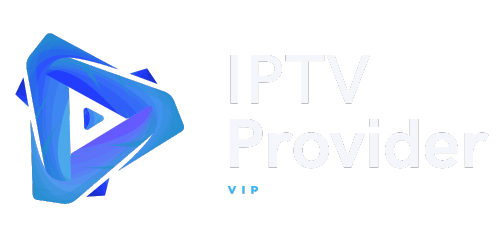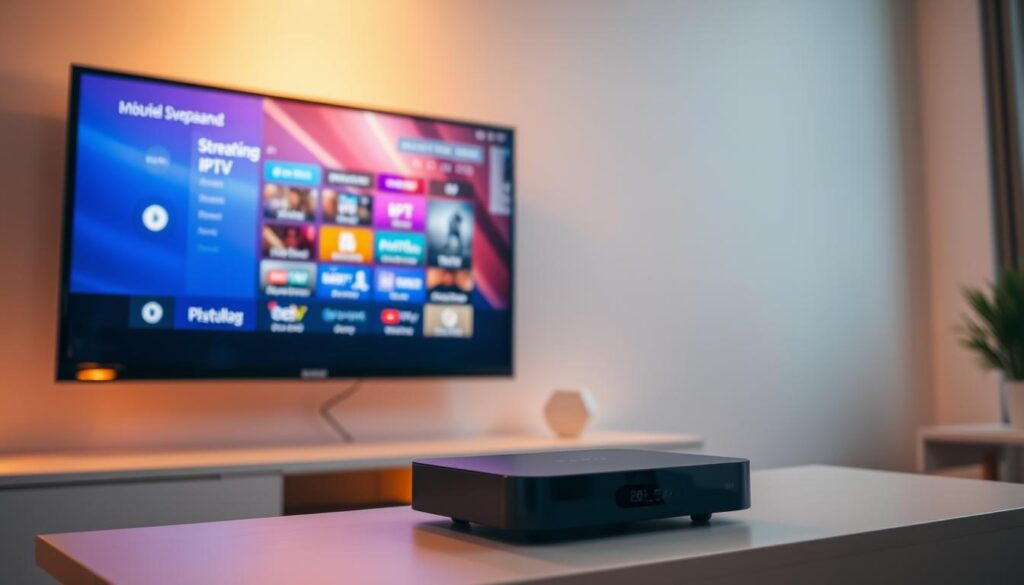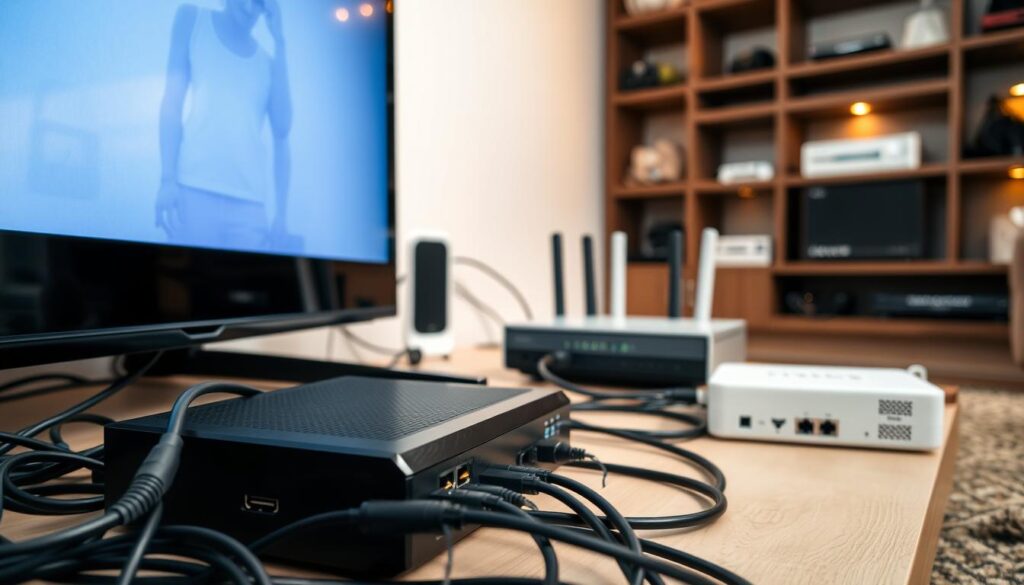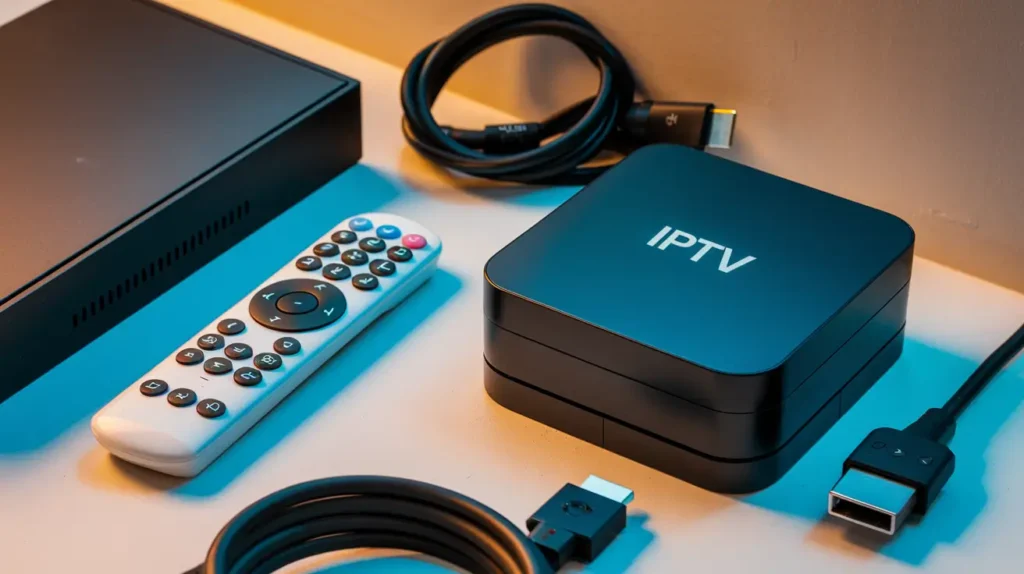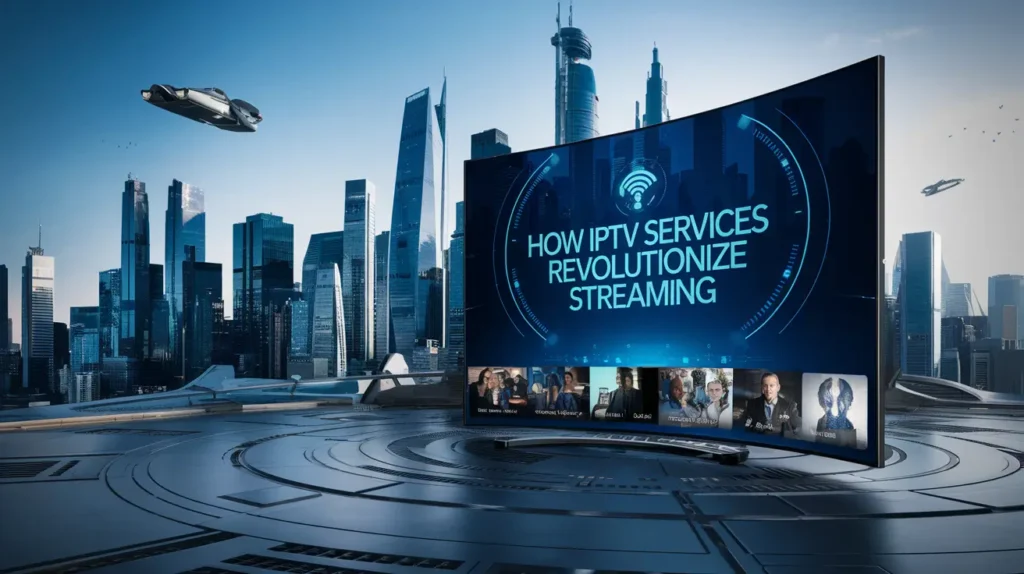How to Troubleshoot IPTV Gear Connection Problems: 6 Steps to Restore Service
achrafmannani
March 8, 2025
Did you know 60% of IPTV users face buffering or freezing due to ISP throttling? It’s key to know how to fix IPTV connection issues to get your service back. Troubleshooting IPTV is vital for a smooth viewing experience. It begins with understanding common problems that cause connection issues.
By following these steps, you can find and fix problems. This ensures your IPTV service is always ready for you. For more on IPTV connection problems and solutions, visit IPTV encoder solutions.
Fixing IPTV connection problems needs a step-by-step approach. This includes checking physical connections, verifying network settings, and testing stream quality. These actions help solve IPTV connection issues and ensure a smooth viewing experience.
IPTV troubleshooting is more than just fixing problems. It’s also about making your network stable and fast for better streaming. This is crucial for a top-notch IPTV service.
Understanding IPTV Connection Issues
IPTV connection problems can really ruin your day, like when your favorite show freezes. These issues often come from internet speed, server quality, and how well your hardware works. It’s key to know what causes these problems to fix them.
Common issues include buffering, freezing, and bad video quality. These can happen because of slow internet, low-quality servers, or outdated hardware. The setup of IPTV services also affects how well it works. For the best streaming, you need a fast internet connection, at least 10 Mbps.
- Internet speed: A minimum speed of 10 Mbps is recommended for seamless streaming.
- Server quality: High-quality servers can help reduce buffering and freezing issues.
- Hardware capabilities: The quality of your device and hardware can impact the overall viewing experience.
Knowing about these factors helps you find and fix IPTV connection problems. This ensures you can watch without interruptions. By focusing on a stable internet, good servers, and the right hardware, you can avoid these issues and enjoy your shows without trouble.
Essential Equipment Check Before Troubleshooting
Before you start troubleshooting, make sure to check your IPTV equipment. This includes the IPTV box, router, and internet connection. A fast internet connection is key for smooth IPTV streaming. You’ll need at least 25 Mbps for HD and 50 Mbps for 4K content.
To start, check the physical connections of your IPTV gear. Make sure all cables are plugged in right. Then, check your router settings and internet connection. Use online speed tests to see if your internet is fast enough for IPTV.
Here are some important things to check:
- IPTV box: Make sure it’s connected to the router and TV.
- Router: Check it’s set up right and your internet is stable.
- Internet connection: Test the speed to see if it’s good for IPTV streaming.
Also, keep your IPTV equipment’s software up to date. This can fix about 70% of problems. By doing a detailed equipment check, you can find and fix issues early on.
Network Requirements for Stable IPTV Service
For a smooth IPTV streaming experience, meeting network requirements is key. A minimum internet speed of 25 Mbps is needed for 4K content. For HD streaming, 10 Mbps is enough. It’s important to ensure your internet speed meets these standards to avoid buffering and poor video quality.
To optimize your network settings, consider these tips:
- Disconnect unnecessary devices to reduce network congestion
- Use a high-quality router to ensure stable connectivity
- Allocate sufficient bandwidth for IPTV streaming
For more information on troubleshooting IPTV connection problems, visit IPTV troubleshooting guide. By following these tips and understanding the network requirements, you can enjoy a stable and high-quality IPTV streaming experience.
How to Troubleshoot IPTV Connection Problems
When you face IPTV connection issues, it’s important to tackle them step by step. Begin by looking at troubleshooting guides for common problems. These might include bad physical connections, wrong network settings, or low stream quality. Make sure all cables are plugged in right, network settings are correct, and your internet speed is good for streaming.
A fast internet connection is key for watching high-quality content. For example, you need 30-40MB for 4K UHD. You can test your stream quality on YouTube to see if your connection is good. Issues with IPTV devices often come from bad connections, like using WiFi far from the router.

- Checking physical connections for security and integrity
- Verifying network settings to ensure they are correctly configured
- Testing stream quality to identify any issues with the internet connection
By following these steps and making sure your internet speed is right for IPTV, you can often fix problems yourself. Remember, being patient and persistent is crucial when fixing IPTV connection issues.
Router-Specific Solutions for IPTV Issues
When you face IPTV problems, think about router-specific fixes. It’s key to make sure your router is set up right for IPTV. This means setting up Quality of Service (QoS) to give IPTV traffic priority. This helps cut down on freezing by managing bandwidth well.
To make your router better for IPTV, limit devices connected during busy times. Use bandwidth management to set aside bandwidth for IPTV. Also, switching to a wired Ethernet connection can greatly lower freezing chances.
If you’re seeing IPTV freeze, check your internet speed online. Most IPTV services need at least 25 Mbps for best performance. Clearing cache can also fix issues like the Electronic Program Guide (EPG) not working. For more on fixing IPTV guide errors, visit IPTV guide error troubleshooting resources.
Some important router fixes include:
- Configuring the router for IPTV streaming
- Optimizing the router settings for stable IPTV service
- Implementing Quality of Service (QoS) settings to prioritize IPTV traffic
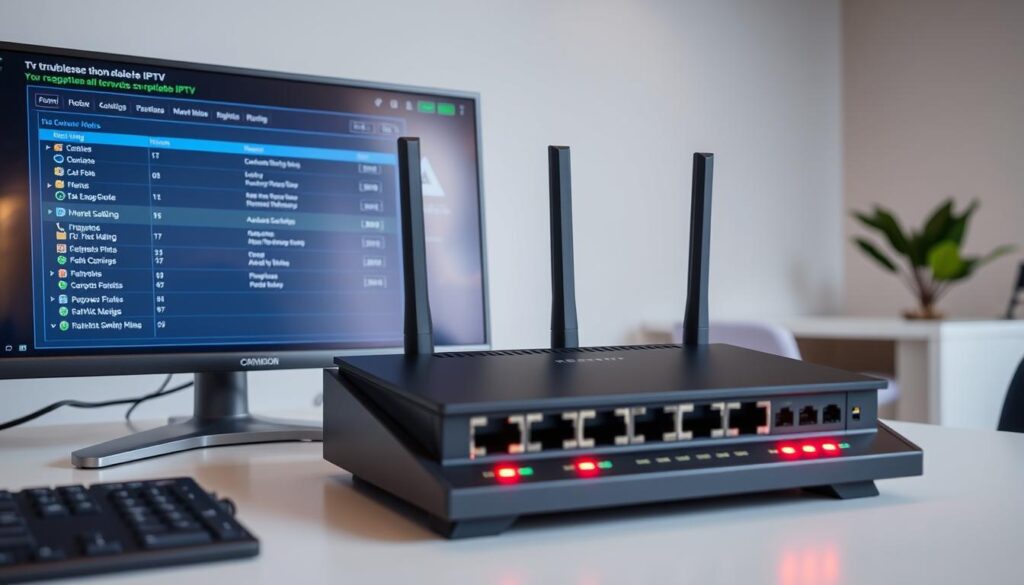
By using these router fixes, you can solve IPTV problems and get a smooth, high-quality stream.
DNS and VPN Considerations
For IPTV streaming, a stable and secure connection is key. DNS and VPN play important roles here. A VPN helps avoid ISP throttling, making streaming smooth. Also, setting up DNS settings can improve IPTV streaming performance.
Many ISPs throttle bandwidth, hurting IPTV streaming. But, a premium VPN keeps speeds almost the same. Free VPNs often sell data or show ads, so premium ones are safer.
Using a VPN for IPTV streaming boosts privacy and security. ISPs can’t track you, and you get strong encryption. For more on IPTV and ISP blocking, check this resource.
Region-specific settings are also crucial for IPTV streaming. They let you access content blocked in your area. Here are some tips for these settings:
- Make sure the VPN has servers in your desired region
- Adjust DNS settings for better IPTV streaming
- Choose a VPN with strong encryption and DNS leak protection
Advanced IPTV Diagnostic Tools
Advanced diagnostic tools are key for fixing complex IPTV connection problems. They help users find and fix issues fast, making sure they can watch without interruptions. Tools like packet sniffers and network analyzers are vital. They let users check network bandwidth and look for errors in multicast packets.
These tools can spot dropped frames, corrupted data, and other quality issues. They help users find the problem quickly and fix it. For example, Wireshark or VLC can analyze packets and show network usage.
For more help with IPTV issues, check out IPTV diagnostics resources. They offer guides and tutorials on using these tools. This way, users can get the best IPTV experience and cut down on downtime.
Using advanced diagnostic tools has many benefits:
- It makes networks perform better and be more reliable.
- It improves video and audio quality.
- It cuts down on downtime and increases uptime.
- It makes users happier and more engaged.
Investing in advanced diagnostic tools and keeping up with new techniques is smart. It ensures a top-notch viewing experience. With these tools, users can quickly find and fix problems, keeping their IPTV service running smoothly.
Service Provider Communication Guidelines
Talking to your service provider is key when you have IPTV connection problems. Knowing when to call for help and what to say is important. About 30% of IPTV users face connectivity issues that ruin their watching experience. Knowing how to talk to your service provider can help fix these problems fast.
Before you call for help, make sure you have all the right info. This includes your account details, what device you’re using, and a clear explanation of the problem. This helps the support team find and fix the issue quickly. Switching ISPs can also help, with 70% of users seeing better streaming after changing.
When you do call for help, make sure to follow your service provider’s rules. This might mean filling out a ticket, calling a number, or using live chat. About 50% of IPTV users look for services that let them stream on multiple devices. By following these steps and giving the right info, you can get your IPTV working again fast.
Here are some important tips for talking to your service provider:
- Have your account details and device information ready
- Provide a detailed description of the issue
- Follow the communication guidelines provided by your service provider
- Be patient and courteous when interacting with the support team
Preventing Future IPTV Problems
To keep your IPTV service running smoothly, regular maintenance and updates are key. By tackling problems early, you can avoid interruptions and enjoy uninterrupted streaming.
Regular Maintenance Tips
Check your IPTV gear often, like your router and set-top box. Make sure all cables are tight and consider swapping out old parts. Also, clean your devices to stop dust from slowing them down.
System Updates Management
Keep your IPTV system’s firmware and software current. Updates fix bugs, boost performance, and add security. Set your devices to automatically update to keep your IPTV network in top shape.
